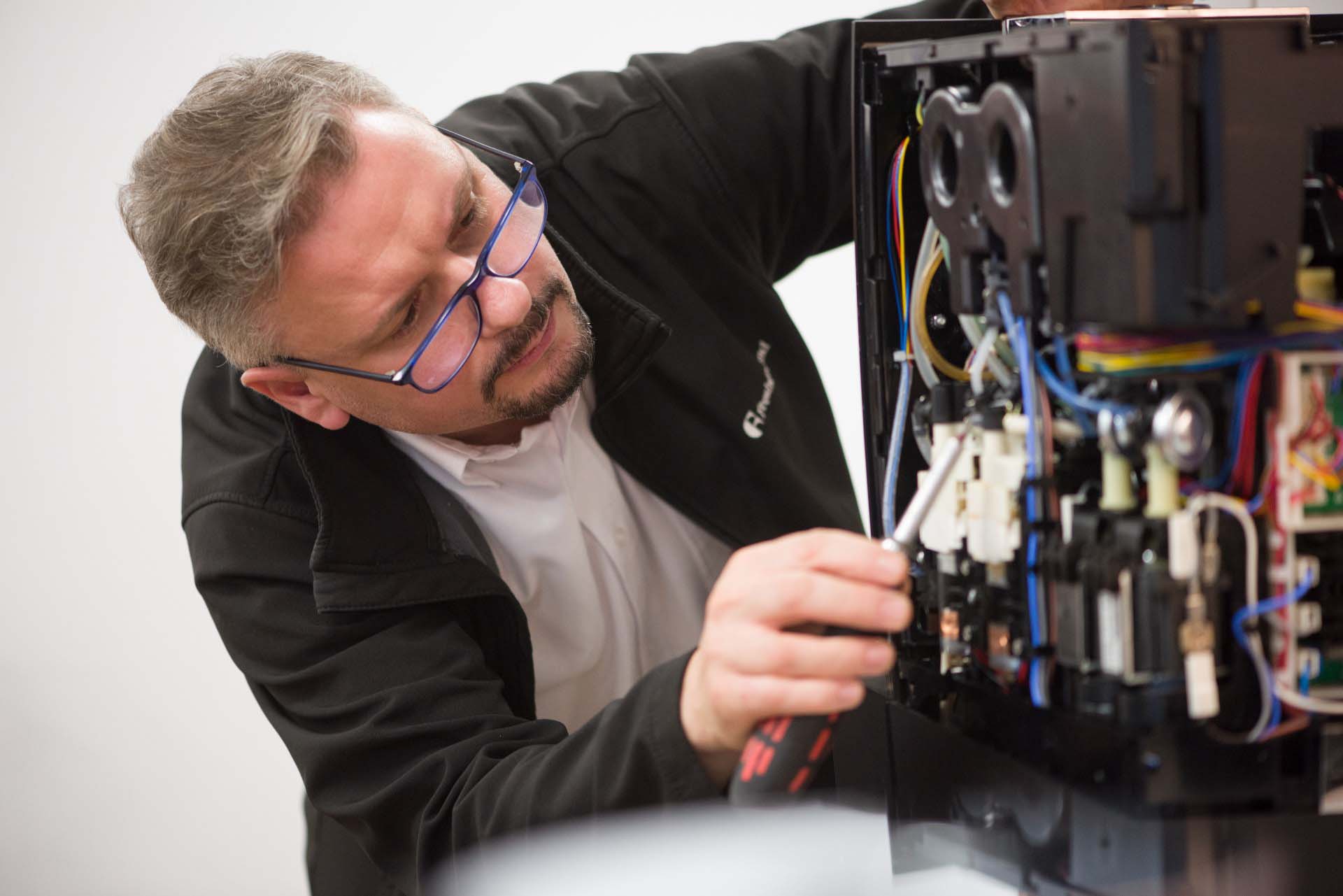Circular economy in facilities management
Lily Hedley | June 19, 2025

What is a circular economy?
A circular economy is a sustainable system that keeps resources in use longer. The user gets as much value as possible from products before renewing them at the end of their lifecycle.
In a traditional linear economy, products are made, used and discarded. A circular economy closes the loop by minimising waste and environmental impact.
This means designing systems and processes that prioritise repair, refurbishment, reuse and recycling. The goal is to reduce demand for new raw materials, lower greenhouse gas emissions and prevent unnecessary landfill waste.
For office coffee machines, using a circular economy changes their lifecycle. Instead of being a single-use product, they become part of a continuous cycle of usefulness.
Why is it important to businesses?
More businesses are building sustainability into the way they work. And as a supplier, we speak with many companies taking steps to reduce their environmental impact. Embracing a circular economy is a good way to achieve this.
By extending the life of equipment and reducing waste materials, businesses can make real progress towards their sustainability goals.
Choosing suppliers that embrace a circular economy is another powerful step. It’s not just about what a business does internally, but also who they choose to work with.
Beyond environmental benefits, choosing suppliers with circular economy practices improves efficiency. Well-maintained machines are less likely to break down, reducing downtime and repair costs. This reliability means smoother daily operations and fewer disruptions for employees.
Additionally, demonstrating commitment to sustainability through responsible procurement enhances a company’s reputation with clients, partners and employees. It signals that the business values ethical practices and takes tangible steps to minimise its ecological footprint. These qualities increasingly influence purchasing decisions and talent retention.
In short, adopting circular economy principles helps businesses save money, reduce risk and build a stronger, more sustainable brand.

How to choose a supplier with the right approach
You don’t want a supply chain that generates excessive waste. So when you’re vetting suppliers, it’s good to ask questions to understand the life cycles of their coffee machines.
Some things to look out for:
- Does the supplier refurbish machines to extend their usable life rather than immediately discarding them?
- Are non-reusable parts recycled properly to prevent landfill?
- Can the supplier clearly explain their machine return, refurbishment and recycling practices?
- Is sustainability a part of their business model rather than just a marketing claim?
Prioritising these factors ensures you partner with suppliers aligned with your environmental values who help drive positive change.
What does a circular economy look like in practice?
If you’re wondering how the circular economy works in practice, office coffee machines are a great example. At FreshGround, we’ve been implementing a circular economy in our coffee machine rental process from the beginning.
Here’s how it works.
When a new machine arrives from the manufacturer, our workshop team prepares it for installation. It’s fully tested and set up to make sure it performs reliably from day one. When a customer finishes with it, that same machine comes back to us.
From there, it’s stripped down, cleaned and refurbished. Any worn parts are replaced. Components that can’t be reused are responsibly recycled. Once it’s restored to like-new condition, the machine goes to its next workplace.
Most of our machines go through this cycle several times during their life. And when a machine has truly reached its end, we disassemble it completely. We salvage anything useful and recycle the rest.
This kind of circular model keeps machines in use for longer, reduces waste and lowers the need for brand new materials. It offers customers an easy way to reduce environmental impact while maintaining quality and convenience.
If your business is looking for a more sustainable approach to workplace coffee, this is one practical way to make it happen.